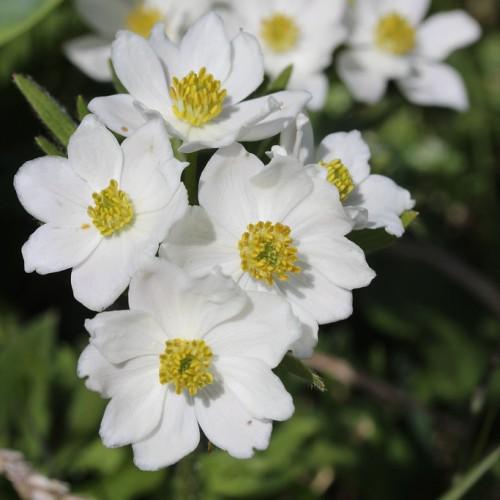
Narcissus Anemone
Anemonastrum sibiricum
Watering:
Minimal
Hardiness Zone:
Flowers:
Flowers
Sun:
Sun
Soil:
Sand
Growth Rate:
Low
Drought Tolerant:
Yes
Salt Tolerant:
Yes
Care Level:
Easy
watering
This plant species prefers a dry warm climate and needs little to no water or fertilizer. It should be watered once a week in the spring and summer, and every month if the weather is hot. Deep watering is recommended, especially during the periods of active growth in the spring and summer. Water the soil directly, avoiding getting the plant's foliage wet. When watering, add enough so that the soil is evenly damp, but not soaked. During the autumn and winter periods, it needs very little to no watering.
sunlight
Pygmyflower Rockjasmine (Androsace septentrionalis) plants prefer full sun to partial shade, but they can tolerate some shade. The best intensity of sunlight is direct morning sun and some shade in the afternoon. This helps the plant from getting sunburnt and assists in keeping moisture and nutrients in the soil. When it comes to timing, it is best to give the Pygmyflower Rockjasmine at least 8 hours of direct sunlight daily. This can be achieved by placing the plant in a bright location near a window or in a spot that receives direct sunshine during the day. If the plant is placed outside, it should be given some shade during the hotter midday hours as this will help the plant retain moisture.
pruning
Pygmyflower Rockjasmine (Androsace septentrionalis) should be pruned after the flowers have bloomed in the spring, usually around mid to late May. Pruning should be done cautiously as the stems of the plant are brittle. Only the flower heads should be removed and the rest of the plant should be left intact. Pruning should be done to maintain a neat, attractive look and should be done no later than early June. Prune no more than 1-third of the stems and leaves. Any stems that are left should be trimmed to encourage branching. Cutting the whole stem below the bud will prevent flowering the following year. To improve flowering the following year apply a layer of mulch once the plant has been pruned.
